Murchison Radio-astronomy Observatory News

March-April 2019 issue

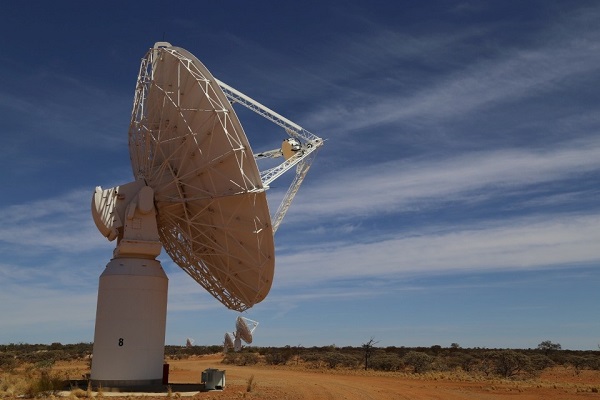
Welcome to the first MRO News for 2019!
It is rather incredible to note that we are already a few months into 2019, however upon reflection, it has been a very busy first quarter of the year, where a number of significant milestones have already occurred. These milestones and other interesting updates have been provided in the following sections, however just to set the scene, please have a thought about the following cryptic extracts, and see if you can associate them with the updates below: {Nyinda barndi?} {ASKAP-36!} {Rome hosts a local!} {Collaboration leads to progress!} {Wanted: RFI!} {EDA-256}.
As you read through this Third Edition of MRO News, you will learn of the many activities that are occurring, not only at the MRO itself, but further afield at state, national and international locations, all in the interest of progressing and further developing the radio astronomy capability upon the MRO.
As we approach the holiday break, I'd like to wish everyone a very Happy Easter and I hope the recent rains have been a blessing.
As always, if you’d like to send feedback about the MRO News, or find out more about something in particular, please send me an email at kevin.ferguson@csiro.au
Kevin Ferguson, CSIRO
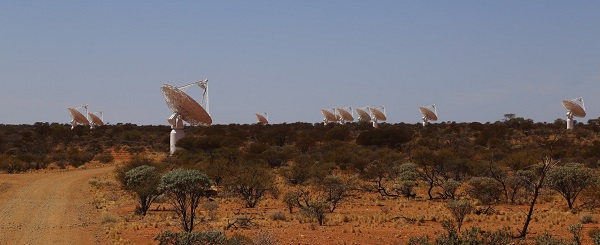
Well it was certainly straight back into it once we got through the Christmas holiday break. It would be great to have a nice slow wind up at the start the year, but has that ever happened?
This year we were straight back into it having to fix a number of different problems. The pressure was on to ensure all 36 ASKAP antennas were going to be ready, as our scientists had “booked in” for the last commissioning run. This would complete the integration of the last eight antennas into ASKAP and to make it a full 36 antenna array instrument.
One of the problems right at the start of the year was that some of the antennas would not stow correctly. Stowing the antennas involves a completely autonomous control which positions the antenna precisely in elevation (or birdbath position) and holding it there whilst a mechanical stow pin is driven in, to lock the antenna in place. This allows the antenna to park safely and withstand higher wind loads. Limit switches were one of the main culprits but we also found a number of failed mechanical parts. Whenever we repair these sorts of problems, we're always on the lookout to try and improve the system.
With the commissioning run ever so close, we still had a few people nervous with their Gantt charts, as two antennas were waiting on gearbox deliveries - and then we had a high voltage joint fail, which prevented us from powering another four antennas. Our Perth office quickly organised for specialist high voltage contractors to mobilise to site to re-terminate the high voltage cable at an antenna transformer and power was restored to the four antennas. Meanwhile, a shipment of spare gearboxes arrived from the Chinese manufacturer, allowing us to get these installed and tune the antenna drive system, just in time for the commissioning run.
It was a very exciting time when the scientists announced on 22 February, that baselines had been established between every pair of the ASKAP 36 antenna array - the full 36 dish array is online! The attached photo of ASKAP was taken on that day.
For the mathematicians out there, that makes 630 baselines (or pairs of antennas) being processed. The formula? Baselines = 36 x 35 / 2. You can also multiply that number by another 36 if you want to count the 36 beams being formed from the phased array feeds. Don’t forget we’re also only counting one frequency and one RF polarisation. The amount of data processing happening in the background is very impressive. Further details from the science perspective is in Aidan’s ASKAP item below.
Apart from the excitement of getting the commissioning run underway, we’ve continued with a number of other tasks including:
Brett Hiscock, CSIRO
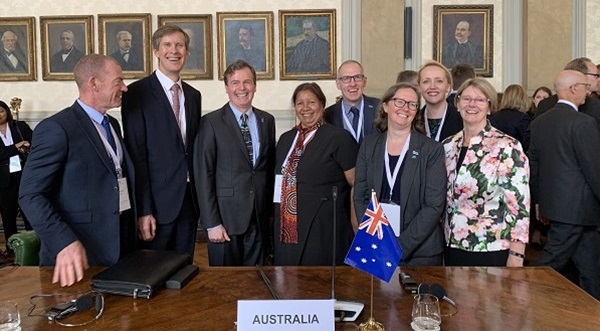
The SKA is officially on its way to becoming the world's second astronomy intergovernmental organisation (IGO) - ever established!
2019 promises to be a busy year for the Australian SKA Office. In fact, I have recently returned from Rome where I travelled to as part of an Australian delegation for the signing of the Convention to establish the SKA Observatory, the intergovernmental organisation tasked with delivering and operating the SKA. Other members of the delegation included CSIRO’s Dr Douglas Bock and Dr Sarah Pearce, Prof Steven Tingay from ICRAR and Leonie Boddington, representing the Wajarri Yamaji community. This is a significant milestone in the delivery of the SKA and the next step towards making the project a reality.
The Convention will be signed by Australia, China, Italy, the Netherlands, Portugal, South Africa and the United Kingdom, with other countries expected to join in the coming year. It will still need to be ratified by the signatory countries ; that process will happen in Australia and other countries over the course of this year. Once five countries have ratified, the SKA Observatory will officially come into being. That is likely to happen later this year or early next year. I'll keep you posted when this occurs.
You may have seen in the media recently that the CSIRO-led Infrastructure Australia consortium officially completed the design of all the essential SKA infrastructure at the Murchison Radio-Astronomy Observatory site. This is a terrific achievement and my congratulations go out to all involved. The Australian design group worked closely with their South African colleagues to share knowledge in what is a fine example of international collaboration.
Finally, between 28 February and 1 March, the Australian SKA Office participated in a workshop, held in Johannesburg, South Africa, to develop a partnership model for in-host country telescope operations. The partnership model relates to how the SKA Observatory and CSIRO (and the South African Radio Astronomy Observatory in South Africa) propose to work together to deliver all the functions and capabilities required to operate a world-leading radio telescope.
David Luchetti, Australian SKA Office
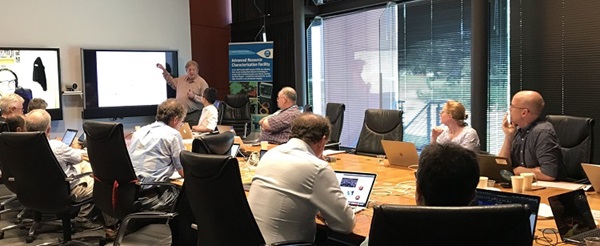
One of the final design consortia has passed its critical design review milestone this has been closely followed by an SKA Low operations planning workshop in WA.
The SKA Project has made rapid progress even in this early period of 2019. The Assembly Integration and Verification (AIV) consortium underwent its Critical Design Review (CDR) on 8 March 2019, and received a pass. These CDR’s are important milestones for the project; each one represents the review by an international external committee of the relevant design area, and reflects the progress towards the final SKA System CDR in late 2019 (see the link to the CDR page on the SKA website for more details about this part of the Project.).
Planning for the operations phase of the SKA has also progressed with two important workshops held in February and March. These 2-day operations planning workshops (one for SKA-Mid in South Africa and one for SKA-Low in Perth). These workshops consisted of SKA Office (SKAO) staff and experienced Australian telescope groups from CSIRO Astronomy and Space Science (CASS) (operators of the MRO and ASKAP), along with Curtin University, University of Western Australia and Pawsey Supercomputing Centre.
These first few months have also seen progress in the design of the SKA-Low antennas, along with progress towards deploying a small set of prototype antennas for further testing during Q2 2019.
Ant Schinckel, CSIRO
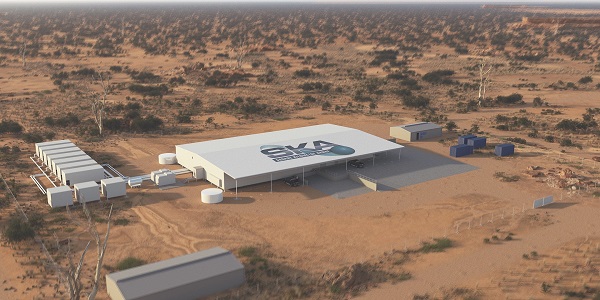
INAU has moved into the "Bridging" phase where the detailed work is happening.
Infrastructure passed its Critical Design Review (CDR) in 2018, and is now in the throes of the Bridging phase. This period addresses the final detail design, as other parts of the project complete their CDR, and small changes occur in the design and layout of the telescope that impact the infrastructure.
Infrastructure in this case includes all the 220 km of roads and tracks around Boolardy Station [excluding the main public roads], the power and fibre distribution, buildings, water and sanitation, site communications and monitoring etc. Detailed work on topics as diverse as water use and best bore locations (subject to heritage and other constraints) as well as the forces exerted by the wind on the final antenna design keep the team busy!
In a related area, you may have seen the release of a “request for information” (RFI) from the SKAO to the power industry for power for SKA1 Low at the MRO. This RFI is not a tender – but a request for interested companies to provide estimates of the sort of power station they could propose to build for SKA and the rates they would charge for power. It is an education and information collecting exercise for the Project, not a procurement. There will be a procurement for power to follow.
Ant Schinckel, CSIRO
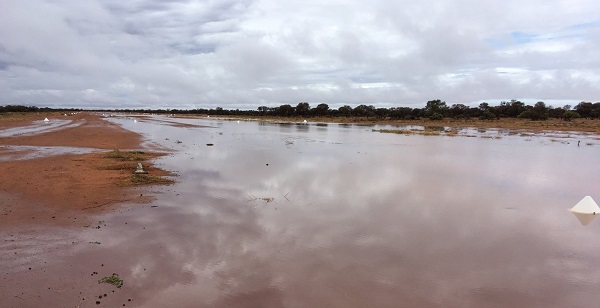
Heritage walkovers are ongoing and we're making progress despite the punishing heat and flooding rains!
On 12 February 2019, DIIS, CSIRO and the Wajarri negotiating team met to discuss more details in the SKA ILUA and Project Agreements. Progress was made, and we are looking forward to the next phase of the process.
Heritage walkovers have been going ahead with teams working through some pretty hot weather in late February and wet weather during the past couple of weeks (see the pic of the flooded airstrip) which has delayed progress by a couple of days. Survey activities are currently scheduled to resume in June.
The terms for the new lease for Boolardy Station are currently being drafted and are expected to be finalised in coming months.
Ant Schinckel, CSIRO and David Luchetti, Australian SKA Office
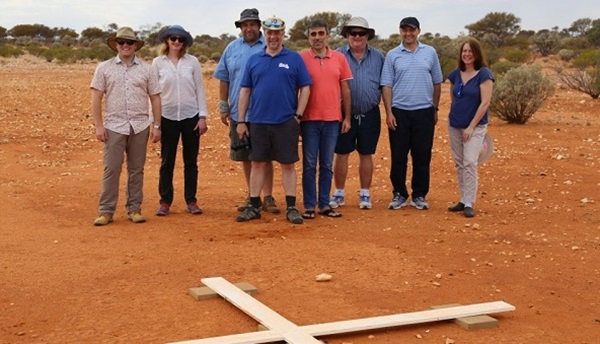
A diverse range of meetings have been held in the past few months in Perth, Geraldton, the Murchison Shire and at the MRO!
The first few months of the year have included the Mid West Research and Development Foundation Committee meeting, which was held in February at CSIRO’s Murchison Support Facility (MSF). This meeting helps to identify opportunities that may be occurring in the R&D environment, through possible engagement with universities and a range of other sectors, to deliver benefits to the Mid West and enable the Mid West community to influence and/or get involved with these activities.
An ILUA Liaison Committee meeting was held at the CSIRO’s Murchison Support Facility (MSF) in Geraldton during March. This provides the Wajarri Yamaji, CSIRO and the Department of Industry, Innovation and Science (DIIS), the opportunity to review MRO-related activities and opportunities and ensure compliance with the Indigenous Land Use Agreement (ILUA).
As mentioned a little earlier in the SKA1-Low update, CSIRO hosted a visit from the SKA Operations Planning Team (based in the UK) during March to conduct an SKA1-Low Operations Planning Workshop, held in the CSIRO building in Kensington, Perth. The SKA team also visited the MRO (pictured) to gain a better understanding of the location and to appreciate the unique site where the SKA1_Low is to be built. Many of them had never previously visited the MRO, so this was a very important opportunity and experience that will be reflected within their planning processes.
CSIRO was delighted to be invited to participate in the recent Murchison Innovation Days, hosted by Wooleen Station and the Murchison Settlement. It was a great opportunity for some of our staff to meet people working in the region and to participate in discussions on topical matters. Thanks to MWDC and all the organisers for initiating this event!
Kevin Ferguson, CSIRO
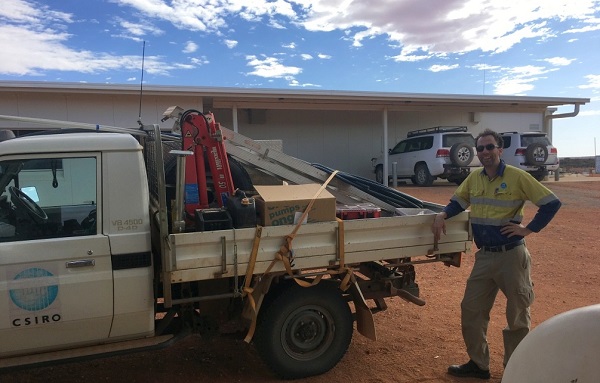
Maintenance and repairs are an ongoing part of operating the MRO - we've had a few tasks on the 'to-do' list in the first quarter of 2019, with a couple more in the pipeline.
We have completed commissioning the power system upgrade with a visit to the site by contractors to further tune the system. The new system has performed very well since the last visit.
Repairs have been conducted to the bore used at the accommodation facility, and we’ve had to replace the logic control system for one of the sewage systems. Repairs to some water points on the station have also been conducted.
Internally we are finalising the Statement of Requirement for the next Boolardy Logistics Support Services contract.
Major upcoming works at Boolardy include an extension to the airstrip at the accommodation and adding two new bores into the water supply to increase redundancy in the water supply system.
Brett Hiscock, CSIRO

Here's a neat summary of the types of things that cause RFI
RFI is “radio frequency interference” – radio energy that gets in the way of receiving a wanted radio signal. In the case of a radio telescope, RFI is an unwanted radio signal that interferes with picking up naturally-occurring radio signatures from objects in space.
There are two main sources of RFI
Radio transmitters
Generally these are systems where radio energy is deliberately created to communicate information, like television stations, CB repeaters, mobile phones, satellites, WiFi and remote controls. In these cases, one person’s wanted signal is another person’s interference! Some types of radio transmitters are designed and used to create heating, like microwave ovens and some medical and industrial heaters. Around the world, interference from radio transmitters is controlled by regulations that specify different frequency bands for different systems and setting power limits on transmitters. This helps to avoid interference to all types of radio communication, not just radio astronomy.
General electrical and electronic
Radio energy is actually just a byproduct of the operation of this type of equipment (motors, computers and vehicles). Internationally, this interference is controlled by manufacturing standards. These controls are also designed to limit interference to all communications, especially TV and radio reception and not just radio astronomy.
In general, RFI from radio transmitters is stronger than that from electrical equipment but is easier to predict because the radio signal is well-defined. This means that RFI from radio transmitters affects the telescope even at long distances, while RFI from electrical equipment is usually only a problem at short distances.
The Radio Quiet Zone (RQZ) regulations for radio transmitters therefore cover a wide geographic area, while the Observatory tries to deal with incidental emissions from electrical equipment on a local, case-by-case basis.
Carol Wilson, CSIRO
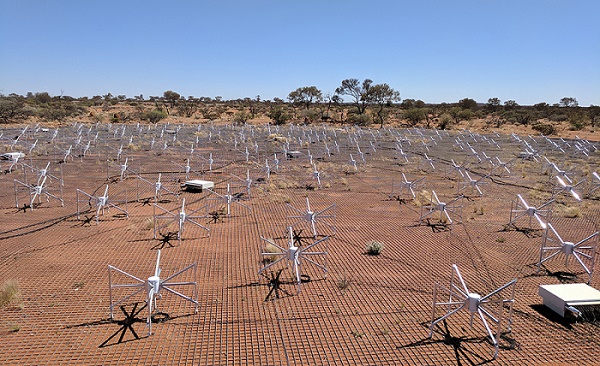
The Murchison Widefield Array (MWA) is a low-frequency radio telescope and a precursor instrument to the SKA. It consists of thousands of spider-like antennas arranged in regular grids called ‘tiles’, spread over several kilometres within the MRO. The MWA is operated by a consortium of 21 institutions from Australia, New Zealand, China, Japan, Canada and the USA, led by Curtin University.
The MWA site has seen much activity since the last update! The array has been switched to its ‘extended’ mode for the upcoming observing period. It took six people four days to reconfigure the array, which is a new record for our Operations team, and especially impressive given the extreme temperatures earlier in the year.
Some additional instruments have been installed recently. A small array of MWA dipole antennas, called the Central Redundant Array Mega-tile (CRAM), was recently deployed at the centre of the MWA’s southern hexagon antennas. CRAM is a student project that will help to describe the beam patterns of our antennas, and improve the telescope’s ability to detect the Epoch of Reionisation.
The MWA also aims to detect bursts of radio waves produced by cosmic rays in the atmosphere. A prototype particle detector that was developed by CIRA scientists has been deployed, which will trigger a new sky observation whenever it detects a shower of particles caused by cosmic rays.
The second version of the Engineering Development Array has also seen much progress; 256 new antennas were built and installed within two days with the help of Geraldton contractors.
New SKA prototype antennas (called SKALA 4.0 and SKALA 4.1) were also deployed on-site by their designers from INAF. Surveying and antenna construction for another 50 of these antennas is scheduled within the next few months.
Mia Walker, Curtin University
.ashx?as=1&h=337&la=en&w=600&hash=AF87D9A607798C0EFBD8B61E3CAC06795E8E96EB)
ASKAP is operating with all 36 antennas and we're counting down to full survey science!
After the successful integration of the final eight antennas to the full array of 36, ASKAP has begun counting down to the commencement of full survey operations – with all 36 antennas working together. The infographic pictured, shows a series of steps that test increasingly larger aspects of the system. The first milestone was obtaining interference fringes across all antennas, which proves that all components of the telescope are working together as a single telescope.
Next, we are observing a series of test fields specified by the science teams with the goal of preparing for pilot surveys. These test fields exercise the modes of operation required for each survey, be it continuum imaging, spectral line imaging, transient detection and so on.
For the first time, we will attempt to process all scheduling blocks using the ASKAPsoft pipeline (our software that processes the data we receive through the antennas) and release images, catalogues and other data products from these test observations on the CSIRO ASKAP Science Data Archive (CASDA). This will confirm that we can provide the science teams with all data products necessary to achieve their goals.
Meanwhile, the science teams are busy planning their pilot survey strategies. Pilot surveys are designed to be a small slice of observing time used in a way that represents how the full, multi-year survey campaigns may proceed.
The ASKAP Commissioning and Early Science (ACES) team just released the Science Observation Guide, a document describing the telescope and its performance, which will be of great use to anyone planning observations with ASKAP or using data from the public archive.
At the same time, the ASKAP team is planning our first Observatory Project – a Rapid Survey of the Southern Sky (RACS) that will surpass any previously available data in ASKAP’s frequency range and provide a calibration reference for the future.
Although the telescope now has the majority of its planned capability, there is plenty of scope for upgrades. After the close of the commissioning project we will enter into a new extended modes project that will prioritise the many requests we have received for additional modes and capabilities. We will continue to develop the ASKAP image processing software and make it available to the wider community.
This is an exciting time for the project and all the astronomers who will soon be receiving their first data from the full-scale array.
Aidan Hotan, CSIRO
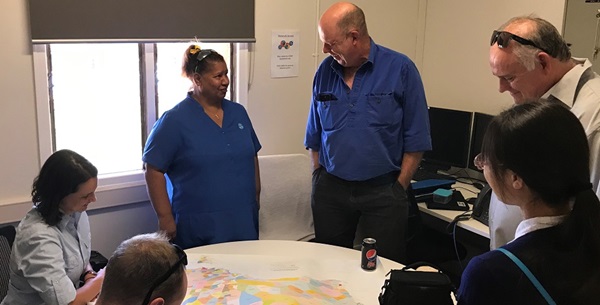
Leonie is based at the Murchison Support Facility in Geraldton. She's pictured here taking some visiting journalists to the MRO through the mandatory heritage site induction before they tour the site and facilities.
Nyinda barndi? Nganajungu ini Leonie
How are you? My name is Leonie
Ngatha Wajarri nyarlu, Wajarri barna
I am an Aboriginal woman from Wajarri country
I was born in Mullewa Hospital and Baptised in the chapel in Melangata Station out of Yalgoo before I was sent to Pallottine Mission Tardun to board and attend school. I also went to Our Lady of Mt Carmel in Mullewa, so I was brought up in a Catholic community alongside my Wajarri way of life.
I’ve been with CSIRO since 2014 as the Aboriginal Liaison Officer. I am a member of the Wajarri Yamaji community, a Director on the Yamaji Art board, a member of the MWAC Meenangu Corporation and involved with the Bundiyarra Irra Wangga Language Centre.
I have always had an interest in the stars and astronomy, and this time of the year in the night sky, we look for the emu in the sky as it tells when the emus are laying their eggs and when it is time to go and look for them. Barndi ngarnagu (good eating).
In my spare time, I love reading books, audio books are becoming my favourite at the moment… somebody reads to me, guess that comes from my time at Tardun Mission where the Lay missionaries use to read to us at bedtime.
My recent milestone trip to Rome to attend the SKA Convention Treaty was a proud moment for me, not only as a representative from Australia but as a Wajarri representative, because the SKA is on the land of the Wajarri people in the Murchison region of WA. Every time I walked passed a church in Rome, I was kind a drawn into it to have a look and have a moment AMEN
I have an awesome job and lucky to be able to work on and for my country and my people the Wajarri Yamaji.
Leonie Boddington, CSIRO
CSIRO acknowledges the Wajarri Yamaji as the traditional owners of the MRO site.